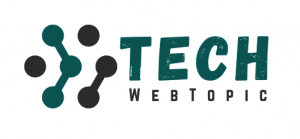What Is Least Privilege?
The principle of least privilege (PoLP) dictates that any account, service, or process should operate using the lowest level of access rights required to complete its function—and no more. By minimizing excess permissions, organizations reduce risk and maintain tighter control over sensitive resources.
Why Least Privilege Matters
-
Minimized Attack Surface: Fewer permissions translate to fewer pathways for attackers to exploit.
-
Reduced Blast Radius: If credentials are compromised, the attacker’s access is strictly limited to what that account can do.
-
Regulatory Compliance: Many standards (PCI DSS, HIPAA, GDPR) mandate strict access controls and periodic privilege review.
-
Improved Auditability: Tracking and validating permissions becomes more manageable when roles are narrowly scoped.
-
Enhanced Operational Discipline: Forces teams to design thoughtful entitlement models rather than granting broad “admin” access by default.
Core Principles of Least Privilege
-
Role-Based Access Control (RBAC):
Define roles aligned to job functions (e.g., “Database Reader,” “Application Deployer”) and assign permissions to roles rather than individuals. -
Just-In-Time (JIT) Access:
Provide elevated permissions on a temporary, need-by-need basis—then automatically revoke them once the task completes. -
Separation of Duties (SoD):
Split critical functions (e.g., development vs. deployment, provisioning vs. approval) across distinct roles to prevent fraud or errors. -
Privileged Access Workstations (PAWs):
Isolate sensitive administration tasks on hardened devices that are locked down and monitored. -
Continuous Privilege Review:
Regularly audit and recertify permissions, ensuring stale or unnecessary rights are removed promptly.
Implementing Least Privilege: A Step-by-Step Approach
-
Inventory and Classify Assets:
Catalog systems, applications, data stores, and their associated roles and permissions. -
Map Roles to Tasks:
For each job function, define the exact resources and actions required. Create narrowly scoped roles accordingly. -
Apply RBAC or ABAC:
– RBAC (Role-Based Access Control): Assign users to predefined roles.
– ABAC (Attribute-Based Access Control): Use dynamic policies that evaluate attributes (e.g., time, location, device) before granting access. -
Adopt JIT and Approval Workflows:
Use privileged access management (PAM) tools to grant temporary elevation, tied to ticketing systems or manager approvals. -
Harden Privileged Endpoints:
Require multi-factor authentication (MFA) and use dedicated workstations for administering critical systems. -
Monitor and Audit:
Continuously log privileged activities, analyze anomalies, and conduct periodic permission reviews. -
Automate Deprovisioning:
Integrate identity management with HR systems to automatically revoke access when roles change or employees depart.
Best Practices and Considerations
-
Least Privilege Everywhere: Extend PoLP beyond human users to service accounts, containers, cloud workloads, and IoT devices.
-
Start Small and Scale: Pilot least-privilege models in a single business unit before rolling out enterprise-wide.
-
Adopt Infrastructure as Code: Define permissions in code (e.g., Terraform IAM policies) for consistent, version-controlled deployments.
-
Leverage Just-Enough-Administration: For cloud platforms, use scoped roles (e.g., AWS IAM policies, Azure custom roles) instead of built-in “Owner” or “Admin” roles.
-
Educate Stakeholders: Train developers, IT operators, and business leaders on the risks of over-permissioning and the benefits of minimal access.
Real-World Examples
| Domain | Least-Privilege Implementation |
|---|---|
| Cloud Infrastructure | AWS IAM roles per microservice, no root usage |
| Databases | “Read-Only” accounts for analytics teams |
| DevOps Pipelines | JIT elevation for deployment jobs; automated revocation |
| End-User Devices | Standard user accounts; admin rights only via approval |
| Network Security | Zero-trust segmentation; firewall rules by service role |
-
Complexity of Policy Sprawl: Use policy visualization tools and tag-based scoping to manage hundreds of roles.
-
Balancing Productivity vs. Security: Implement self-service request portals and rapid approvals to minimize workflow friction.
-
Legacy Systems: Introduce service proxies or vaulting solutions to enforce PoLP on monolithic or legacy applications.
Conclusion
Adopting the principle of least privilege is a strategic imperative in today’s threat landscape. By ensuring that every identity—human or machine—operates with only the permissions it truly needs, organizations can significantly reduce risk, meet compliance mandates, and build a resilient security posture capable of withstanding modern attacks.


